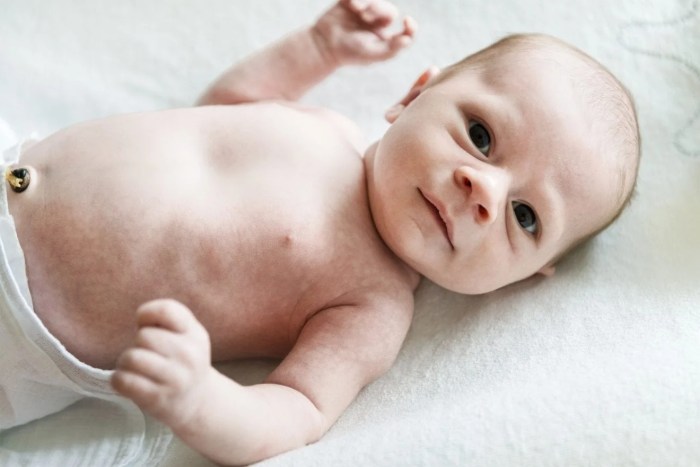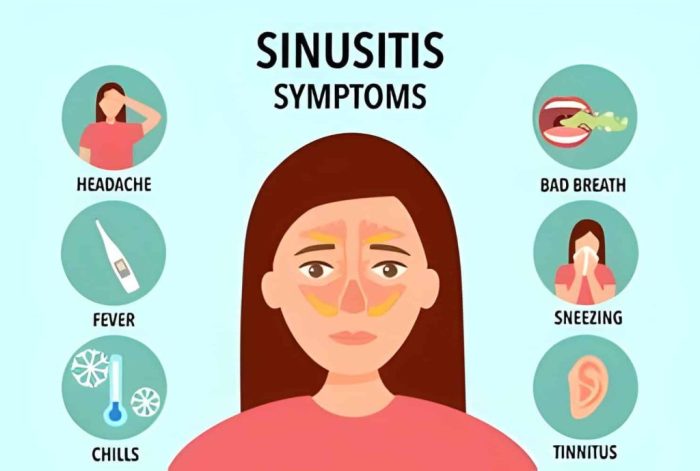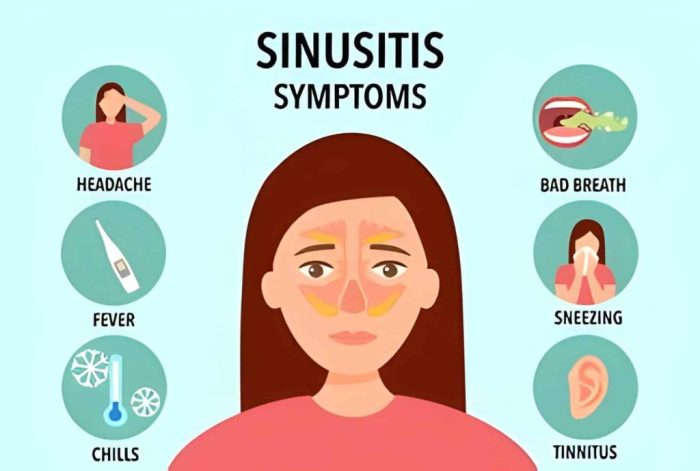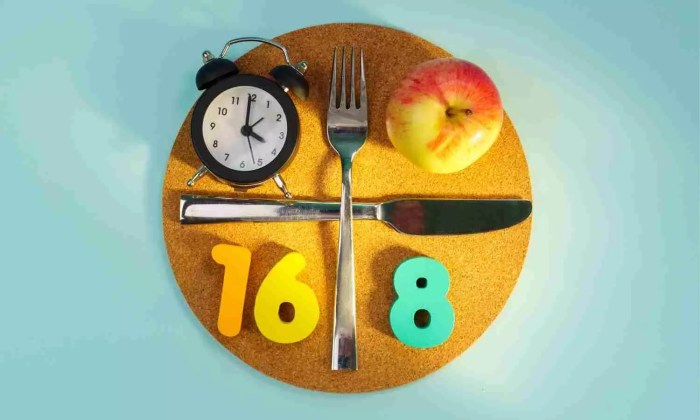How long does ibuprofen last? This question is crucial for anyone who’s used this common pain reliever. Understanding its duration of action, from absorption to metabolism, is key to getting the most effective relief and avoiding potential side effects. Different factors influence how long ibuprofen stays in your system, impacting everything from the dosage to the severity of the pain.
Let’s explore the factors affecting ibuprofen’s duration of action, along with how it compares to other pain relievers.
Ibuprofen, a non-steroidal anti-inflammatory drug (NSAID), is commonly used to relieve pain, fever, and inflammation. Knowing how long ibuprofen remains effective is essential for managing symptoms effectively and safely. The duration of ibuprofen’s effects depends on several factors, which will be explored in detail. This guide will delve into the science behind ibuprofen’s duration of action, providing a comprehensive understanding of its impact on the human body.
Ibuprofen Duration of Action: How Long Does Ibuprofen Last
Ibuprofen, a common nonsteroidal anti-inflammatory drug (NSAID), is widely used to relieve pain and reduce inflammation. Understanding how long ibuprofen’s effects last is crucial for proper medication management and avoiding potential side effects. This article delves into the duration of ibuprofen’s action, considering factors like absorption, metabolism, and individual variations.Ibuprofen’s duration of action is not a fixed timeframe. It varies depending on several factors, including the dosage form, individual metabolism, and concurrent medications.
Generally, the pain-relieving and anti-inflammatory effects of ibuprofen typically persist for several hours after ingestion. The specific duration is influenced by factors that will be further detailed in the following sections.
Typical Duration of Ibuprofen Effects
Ibuprofen’s effects typically last for 4 to 6 hours after a single dose. This duration is dependent on factors like the dosage strength, route of administration, and individual physiology. Higher doses may extend the duration, but it’s not a simple linear relationship. For instance, a 200mg dose will likely have a shorter duration than a 400mg dose, but the actual duration will vary based on individual metabolic rate.
Factors Influencing Ibuprofen Duration
Several factors contribute to the variability in how long ibuprofen’s effects last. These include the individual’s metabolic rate, the presence of other medications, and the form of ibuprofen taken. A faster metabolism will result in ibuprofen being processed and eliminated from the body more quickly, leading to a shorter duration of action. Concurrent use of other medications, particularly those affecting liver function, can also influence the rate of ibuprofen metabolism.
Absorption and Metabolism of Ibuprofen
Ibuprofen is absorbed into the bloodstream primarily from the stomach and small intestine. Once absorbed, it’s transported to the liver, where it undergoes metabolism. The primary metabolic pathway involves the cytochrome P450 enzyme system. The rate of this metabolism varies between individuals, influencing the duration of ibuprofen’s effects. Different dosage forms, like tablets, capsules, and liquids, have different dissolution rates, affecting the speed of absorption and thus the onset and duration of action.
Individual Variations in Ibuprofen Duration
The duration of ibuprofen’s effects can vary significantly between individuals due to differences in metabolic rates. Factors like age, weight, and overall health can impact how quickly the body processes and eliminates ibuprofen. For example, individuals with pre-existing liver conditions may experience a slower metabolism of ibuprofen, resulting in a longer duration of action. Children and the elderly may also exhibit different metabolic rates compared to adults.
Comparison of Ibuprofen Duration in Different Dosage Forms
| Dosage Form | Average Duration of Action (hours) | Notes |
|---|---|---|
| Tablets | 4-6 | Generally slower absorption compared to liquid forms. |
| Capsules | 4-6 | Similar absorption rate to tablets, depending on the specific formulation. |
| Liquid Suspension | 3-5 | Faster absorption due to direct dissolution in the gastrointestinal tract. |
This table provides a general comparison of average duration of action across different dosage forms. The actual duration may vary based on the individual’s metabolism and the specific formulation of the medication.
Ibuprofen Dosage and Duration
Ibuprofen, a common over-the-counter pain reliever, is known for its effectiveness in managing various aches and pains. Understanding how different dosages impact its duration of action is crucial for maximizing its benefits and minimizing potential side effects. Proper dosage is key to achieving the desired relief without jeopardizing safety.Different dosages of ibuprofen affect how long its pain-relieving and anti-inflammatory effects last.
This is due to the varying concentration of the drug in the bloodstream. A higher dose will generally lead to a longer period of effectiveness, but this doesn’t always mean a longer duration of relief. The body’s metabolism and individual responses also play a role in how quickly the drug is processed.
Ibuprofen’s effects typically last for a few hours, depending on the dosage and your body’s metabolism. However, maintaining bone health is crucial for long-term well-being, and taking proactive steps like those outlined in this guide on how to prevent osteoporosis can significantly impact your overall health. So, while ibuprofen’s temporary relief is important, consistent preventative measures like these are essential for long-term health.
Impact of Dosage on Ibuprofen Duration
The relationship between ibuprofen dosage and its duration of action is not linear. While a higher dose might provide relief for a longer period, exceeding the recommended dosage is not always the best solution. Following prescribed dosages is paramount for both effectiveness and safety.
Common Ibuprofen Dosages and Expected Duration
Different formulations and strengths of ibuprofen are available. Common dosages and their estimated durations of action are described below. It is crucial to note that these are approximations and individual responses can vary.
| Dosage (mg) | Expected Duration of Relief (hours) |
|---|---|
| 200 mg | 4-6 hours |
| 400 mg | 6-8 hours |
| 600 mg | 8-10 hours |
| 800 mg | 8-12 hours |
Note: The duration of action can be influenced by factors such as individual metabolism, the presence of other medications, and the specific type of pain being treated. Consult with a healthcare professional for personalized advice. Always adhere to the dosage instructions on the medication label and any recommendations from your doctor.
Factors Affecting Ibuprofen Duration
Ibuprofen, a widely used nonsteroidal anti-inflammatory drug (NSAID), provides pain relief and reduces inflammation. However, the length of time ibuprofen remains effective isn’t a fixed value. Numerous factors influence how quickly ibuprofen is absorbed, metabolized, and ultimately, how long its effects last. Understanding these factors can help individuals better manage their pain and ensure they’re taking ibuprofen effectively.
Individual Physiology
Individual variations in physiology significantly impact ibuprofen’s duration of action. Liver function plays a crucial role in metabolizing ibuprofen. Individuals with impaired liver function might experience slower metabolism, leading to a prolonged duration of ibuprofen’s effects and potentially a higher risk of side effects. Genetic variations in the enzymes responsible for ibuprofen metabolism can also affect how quickly the drug is processed, impacting its duration of action.
Furthermore, factors like body weight, age, and overall health status influence the rate of absorption and metabolism. A person with a higher body mass might experience slightly faster absorption compared to someone with a lower body mass.
Medication Interactions
The presence of other medications can alter ibuprofen’s duration of action. Some medications can inhibit the enzymes responsible for ibuprofen’s metabolism, leading to a longer duration of action and increased risk of side effects. For example, concurrent use of certain antibiotics or antifungals may impact the clearance rate of ibuprofen. It’s essential to inform healthcare providers about all medications being taken, including over-the-counter drugs and supplements.
Food Intake
Food intake significantly impacts the absorption rate of ibuprofen. Consuming food with ibuprofen can delay the absorption process. The presence of food in the stomach can slow the release of ibuprofen into the bloodstream. This delay can affect the onset of pain relief, although the overall duration of action might not be significantly altered in most cases.
Types of Food
The specific type of food consumed can also slightly influence the duration of ibuprofen’s effects. High-fat meals can potentially delay the absorption of ibuprofen more than meals low in fat. However, the difference in duration is typically not substantial enough to significantly alter treatment strategies.
Severity of Pain
The severity of the pain condition also influences the needed duration of ibuprofen’s action. For severe pain, individuals might need a higher dose or more frequent administrations of ibuprofen to achieve the desired level of pain relief. The duration of action required to effectively manage the pain will vary based on the condition’s intensity.
Factors Affecting Ibuprofen Duration – Summary Table
| Factor | Potential Impact on Duration |
|---|---|
| Liver function | Impaired liver function can lead to prolonged duration and increased risk of side effects. |
| Other medications | Interactions with other drugs can alter metabolism, potentially prolonging ibuprofen’s duration and increasing risk of adverse effects. |
| Food intake | Food can delay absorption, but overall duration might not be substantially altered. High-fat meals may delay absorption more than low-fat meals. |
| Pain severity | More severe pain may require higher doses or more frequent administration to achieve adequate pain relief, but not necessarily a longer duration of action. |
| Body weight/age/health | Individual variations in these factors can affect absorption and metabolism, potentially influencing duration. |
Ibuprofen and Specific Conditions

Ibuprofen, a common over-the-counter pain reliever, is generally effective for various conditions. However, its duration of action and effectiveness can vary depending on the individual and the specific condition being treated. Understanding these variations is crucial for appropriate use and management of symptoms. This section delves into how ibuprofen’s duration might differ for specific conditions, particularly those involving inflammation, fever, and individuals with underlying health concerns.Inflammation and Fever Response TimesIbuprofen’s duration of action is influenced by the intensity and duration of the inflammatory response.
Ibuprofen’s effects typically last for a few hours, but individual experiences can vary. Knowing your Body Mass Index (BMI) can sometimes influence how your body processes medication, and checking a reliable BMI chart for women, like the one found here , might offer some insight. Ultimately, though, the length of time ibuprofen stays in your system depends on factors like your metabolism and the dosage you take.
For mild to moderate inflammation, ibuprofen’s anti-inflammatory effects can last for several hours, typically 4 to 6 hours, depending on the dosage and individual metabolism. In cases of more severe or persistent inflammation, such as those associated with chronic conditions, ibuprofen’s duration of action might not be sufficient, and a longer-acting or different medication might be necessary. Similarly, the duration of fever reduction varies.
In some individuals, ibuprofen might effectively reduce fever for several hours, but in others, a more prolonged effect might be observed. Factors like the individual’s immune response and the severity of the fever influence the duration of relief.Impact of Kidney and Liver ConditionsIndividuals with kidney or liver issues must be cautious when using ibuprofen. The liver and kidneys play crucial roles in processing and eliminating ibuprofen from the body.
In individuals with compromised liver or kidney function, ibuprofen’s duration of action can be prolonged due to slower clearance. This means that the drug remains in the body for a longer period, potentially increasing the risk of side effects. Consult a healthcare professional for appropriate dosage adjustments and monitoring if you have pre-existing kidney or liver conditions.Influence of Underlying Medical ConditionsCertain medical conditions can influence ibuprofen’s duration of action.
For example, individuals with gastrointestinal ulcers or bleeding disorders might experience a shorter duration of ibuprofen’s effectiveness due to increased stomach irritation. This can be attributed to the potential for ibuprofen to exacerbate these conditions. Always consult with a doctor before using ibuprofen if you have a history of such conditions.Variations in Duration for Children and AdultsChildren metabolize medications at a different rate than adults.
Consequently, ibuprofen’s duration of action in children might differ from that in adults. The dosage and administration schedule should be carefully tailored to the child’s age, weight, and specific condition. For children, the duration of relief might be shorter than for adults due to their faster metabolic rates. Always consult a pediatrician for appropriate dosage and duration guidance for children.Typical Duration of Ibuprofen’s Effect for Various Ailments
| Ailment | Typical Duration of Effect (Hours) |
|---|---|
| Mild headache | 4-6 |
| Muscle soreness after exercise | 4-8 |
| Fever | 4-6 (may vary depending on severity and individual response) |
| Dental pain | 4-6 |
| Menstrual cramps | 4-8 |
Note: These are general guidelines. Individual responses to ibuprofen can vary significantly. Always consult a healthcare professional for personalized advice and recommendations.
Possible Side Effects and Duration
Ibuprofen, while a common and effective pain reliever, can sometimes cause unwanted side effects. Understanding these side effects and their typical duration is crucial for responsible use and prompt action if needed. Knowing the potential effects allows for better management and communication with healthcare providers.
Common Side Effects
Many individuals experience mild side effects when taking ibuprofen. These effects are often temporary and resolve on their own. Understanding the common side effects and their duration helps distinguish between expected reactions and potential more serious issues.
- Stomach Upset: Gastrointestinal issues like nausea, heartburn, indigestion, and abdominal pain are relatively common side effects of ibuprofen. These typically occur within a few hours of taking the medication and usually resolve within a day or two, particularly with smaller doses or shorter durations of use. However, if symptoms persist or worsen, it’s essential to consult a doctor.
- Allergic Reactions: While less common, allergic reactions to ibuprofen can occur. Symptoms like hives, swelling (especially around the face, lips, or tongue), difficulty breathing, or a rapid heartbeat can appear quickly after taking the medication. Severe allergic reactions, also known as anaphylaxis, require immediate medical attention. The duration of an allergic reaction depends on the severity and the steps taken to address it.
- Kidney Problems: In rare cases, ibuprofen can potentially affect kidney function. This is particularly relevant for individuals with pre-existing kidney conditions or those taking high doses over extended periods. Symptoms of kidney problems can range from mild discomfort to more serious issues. The duration of kidney problems, if they occur, depends on the severity and promptness of medical intervention.
The duration of these problems can vary greatly, ranging from temporary issues to long-term complications.
- Bleeding Issues: Ibuprofen can thin the blood, potentially increasing the risk of bleeding in some individuals. This is especially important for people with bleeding disorders or those taking other medications that affect blood clotting. The duration of this risk depends on the individual, the dosage, and other factors, and can be temporary or extended.
Dosage and Individual Factors, How long does ibuprofen last
The duration of side effects can vary depending on the dosage of ibuprofen taken. Higher doses and longer durations of use generally increase the risk of side effects. Individual factors, such as pre-existing health conditions, age, and overall health, also play a significant role. For example, individuals with a history of ulcers or stomach problems may experience stomach upset more readily than others.
Table of Common Side Effects and Typical Duration
| Side Effect | Typical Duration | Important Considerations |
|---|---|---|
| Stomach Upset (nausea, heartburn, indigestion) | Usually resolves within 1-2 days, sometimes longer depending on dosage | Consult a doctor if symptoms persist or worsen. |
| Allergic Reactions (hives, swelling, difficulty breathing) | Can range from immediate to prolonged depending on severity. | Immediate medical attention is critical for severe reactions. |
| Kidney Problems | Duration varies greatly depending on severity and intervention. | Consult a doctor immediately if experiencing any potential kidney-related symptoms. |
| Bleeding Issues | Duration depends on the individual, dosage, and other factors. | Consult a doctor if experiencing unusual bleeding. |
Alternatives and Comparisons
Different pain relievers work in various ways, impacting their duration of action and effectiveness. Understanding these differences is crucial for choosing the right medication for your specific needs. This section delves into the comparison of ibuprofen with other common pain relievers, highlighting their unique characteristics.Understanding the different pain relievers and their varying durations of action is vital for choosing the most appropriate medication.
Different drugs target pain in different ways, influencing their duration of effectiveness.
Ibuprofen vs. Acetaminophen
Ibuprofen, a non-steroidal anti-inflammatory drug (NSAID), works by reducing inflammation and pain. Acetaminophen, on the other hand, primarily reduces pain and fever without directly addressing inflammation. This fundamental difference in mechanism affects their duration of action and suitability for different conditions.
Comparison of NSAIDs
Various NSAIDs, including ibuprofen, naproxen, and others, exhibit differing durations of action due to variations in their metabolism and how they interact with the body’s pain signaling pathways. Understanding these differences can help tailor treatment to specific needs.
Ibuprofen’s effects typically last for a few hours, depending on the dosage and individual metabolism. However, understanding potential heart-related issues, like those sometimes associated with fibromyalgia, is crucial. For instance, learning more about heart abnormalities in fibromyalgia can help you make informed decisions about your health. Ultimately, it’s always best to check with your doctor about the optimal use of ibuprofen and any potential concerns.
Duration of Action Comparison Table
| Medication | Typical Duration of Action (hours) | Mechanism of Action |
|---|---|---|
| Ibuprofen | 4-6 hours | Reduces inflammation and pain by inhibiting cyclooxygenase enzymes. |
| Acetaminophen | 4-6 hours | Reduces pain and fever by inhibiting the synthesis of prostaglandins. |
| Naproxen | 6-8 hours | Reduces inflammation and pain by inhibiting cyclooxygenase enzymes. It has a longer half-life compared to ibuprofen. |
This table provides a concise overview of the typical duration of action for ibuprofen, acetaminophen, and naproxen. It’s important to remember that individual responses may vary.
Metabolic Differences
The differing metabolic pathways of various pain relievers contribute to their distinct durations of action. Ibuprofen, for example, is metabolized primarily in the liver, while acetaminophen has a more complex metabolic route involving multiple organs. This difference in metabolism can lead to variations in how quickly the drug is eliminated from the body. The duration of action is directly linked to how quickly the drug is removed from the bloodstream.
Benefits and Drawbacks
The choice between ibuprofen, acetaminophen, and naproxen depends on the individual’s needs and the specific condition being treated. Ibuprofen, due to its anti-inflammatory properties, may be more effective for conditions involving inflammation, such as arthritis. Acetaminophen, with its more focused action on pain and fever, might be preferred for situations where inflammation is not a primary concern. Naproxen, with its longer duration of action, offers sustained relief but might also carry a slightly higher risk of gastrointestinal side effects.
The duration of action should be considered alongside the specific condition and potential side effects.
General Information Presentation

Ibuprofen, a common over-the-counter pain reliever, is widely used for its effectiveness in managing various aches and pains. Understanding its duration of action is crucial for maximizing its benefits and minimizing potential side effects. This guide provides a comprehensive overview of ibuprofen’s duration, factors influencing it, and important considerations for safe and effective use.Ibuprofen’s duration of action isn’t a fixed timeframe; it varies based on several factors, including dosage, individual metabolism, and the specific condition being treated.
A clear understanding of these factors allows for more informed decisions about when and how to use ibuprofen. This section will delve into the details to help you make the most of this commonly used medication.
Ibuprofen’s Duration of Action Summary
Ibuprofen’s effects typically last for several hours after administration, depending on the factors mentioned above. The duration of pain relief or inflammation reduction can be influenced by the individual’s metabolism, the specific condition, and the dosage taken. A typical duration is between 4 and 8 hours, but this range can be affected by the factors described below.
Factors Affecting Ibuprofen Duration
Several factors play a role in determining how long ibuprofen’s effects last. Understanding these factors is key to managing expectations and using the medication appropriately.
- Dosage: Higher doses generally lead to a longer duration of action, though this is not always linearly proportional. For example, a single 200mg dose may offer relief for 4-6 hours, while a 400mg dose may last 6-8 hours. However, excessively high doses may not result in a proportionally longer duration and could increase the risk of side effects.
- Individual Metabolism: The rate at which the body processes ibuprofen varies from person to person. Factors like age, overall health, and the presence of other medications can influence metabolism. Someone with a faster metabolism might experience shorter relief periods, while someone with a slower metabolism may experience longer relief.
- Specific Condition: The underlying condition being treated also impacts ibuprofen’s duration of action. For example, mild headaches may respond to a single dose for a few hours, whereas more severe conditions, like arthritis, may require more frequent dosing and potentially longer-lasting relief.
Importance of Professional Consultation
While this information provides a general overview, it is essential to consult a healthcare professional for personalized advice. They can assess your specific needs, medical history, and any other medications you’re taking to determine the most appropriate dosage and frequency for you. This is particularly important for individuals with pre-existing conditions, those taking other medications, or those experiencing persistent or severe pain.
Visual Representation of Duration
| Dosage (mg) | Approximate Duration (hours) | Considerations |
|---|---|---|
| 200 | 4-6 | Suitable for mild pain |
| 400 | 6-8 | Potentially more effective for moderate pain |
| 600 | 6-10 | Should only be used under medical supervision. |
This table provides a simplified representation. Individual experiences can vary significantly. Consult a doctor for personalized guidance.
Final Conclusion
In conclusion, ibuprofen’s duration of action is influenced by various factors, including dosage, individual physiology, and concomitant medications. Understanding these factors is crucial for optimal pain relief and minimizing potential side effects. While this guide provides valuable insights, consulting with a healthcare professional is always recommended for personalized advice and treatment plans, especially for specific medical conditions or concurrent medications.




























